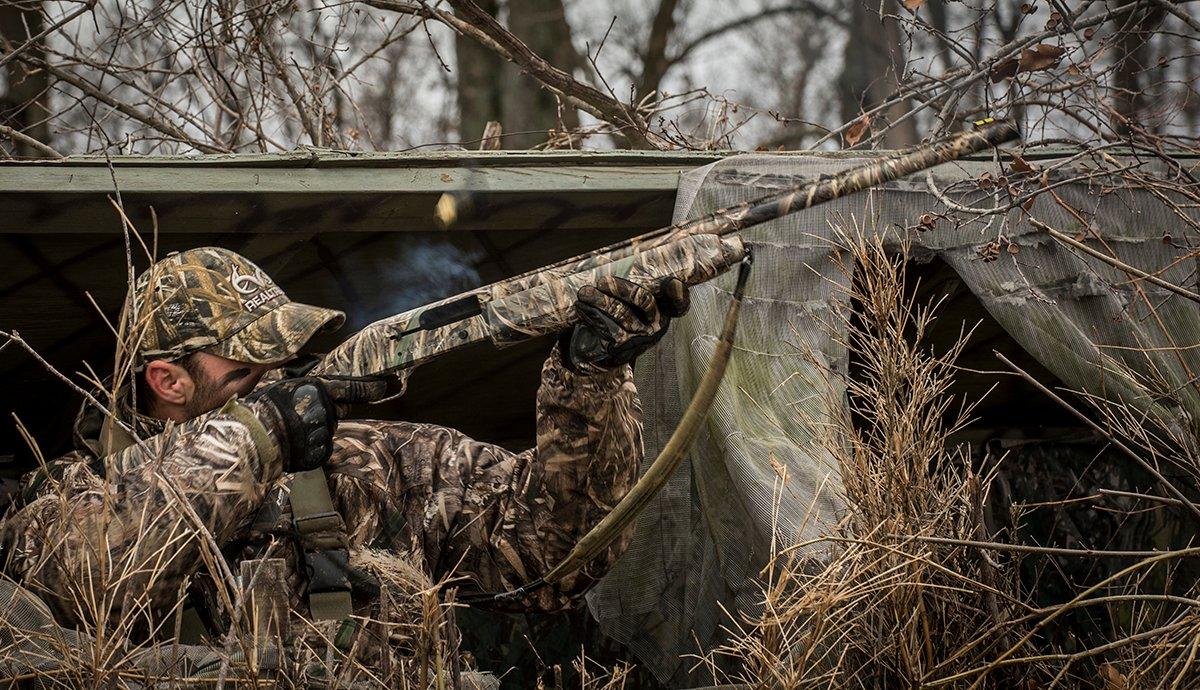Accurately gauging distance afield is critical to shooting success
You'll likely repeat the question in your head 1,000 times during your hunting career: Is that bird in range or too far?
That's good, of course. No one likes a skybuster, and everyone hates losing a cripple. Still, you want to take advantage of legitimate opportunities, and it hurts to pass a bird that's in range. To make good decisions, you must be able to judge the distance of ducks or geese quickly and accurately. And although that's easy in many situations, it can be difficult during others. Here are some tips that have helped me.
Range-Finders
Obviously, you cannot use a laser range-finder on a flying bird. However, you can range landmarks near your setup — decoys, cattails or the opposite shoreline of a pothole, for example — to determine their exact distance. Then, when a duck or goose passes those markers, you know it's in range. This usually only helps with crossing, incoming or outgoing shots, of course.
Markers
Often, it's helpful to incorporate some type of range marker into your setup. That can be a decoy or spinner at a specific distance or even a stake you plant into the bottom. Such markers are especially helpful when hunting big water, as you have few landmarks, and birds often look closer than they actually are. For years, friends and I hammered a metal stake outside of our shoreline diver spread to mark 40 yards from our blind. It's amazing how handy that was.
Colors?
Many folks will tell you that if you can see distinct colors on a duck — a drake mallard's green head, white neck ring and chestnut breast, for example — the bird is in range. That's often true — but not always. I've watched birds sail by at 100 yards during crisp, clear mornings and easily identified them by feather color. And they obviously weren't close to being in range. Further, during cloudy or rainy days, or early morning and late evening, you sometimes can't make out the colors on a duck. To me, using plumage to determine range is pretty shaky.
Mental Pictures
The best and most consistent method for gauging distance is to observe waterfowl and form a mental picture of when that target is within range. After observing and shooting at enough ducks and geese, your brain should signal when the silhouette of a bird is close enough for a shot. Of course, that picture will differ based on size. A teal at 40 yards looks nothing like a honker at that range. But again, experience solves that. By identifying the approaching bird and instinctively falling back on that mental picture, you'll know when it's time to shoot or wait for another pass. This is especially critical for overhead shots, because you won't have landmarks to aid your decision.
The duck regulations from some states show what the overhead silhouettes of ducks and geese look like at 30 to 40 yards and other distances. These images can't replace the real thing, but they're pretty helpful.
Practice
As a turkey hunter, I constantly look at landmarks, try to guess their range and then use a range-finder to grade my performance. I've learned I'm pretty good to 40 yards, but my performance begins to deteriorate at longer distances.
Off-season time at the range can help. When you shoot still or moving targets at established ranges, that hones your mental-picture-making ability. And honestly, when firing at 25- and 50-yard still targets, I'm amazed at how close they look. There's a lesson there.
When in Doubt
No matter your skill level, you'll still misjudge a bird now and then. It happens. I try to compensate by using fairly stout louds that can still cleanly kill a bird when I make a 5- to 10-yard mistake.
Better, I almost always err on the side of caution. If I think a duck or goose is too far, I don't shoot. Sometimes, I kick myself afterward. However, I've never felt anything but shame after taking a flier at a bird and then watching it sail, chest-shot, 400 yards away.
Click here for more Realtree waterfowl hunting content. And check us out on Facebook.








